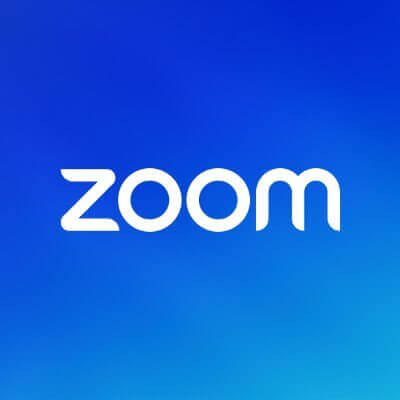E-Scooter App Monetization Strategies: Subscription, Per-Ride & More
Explore the best monetization strategies for e-scooter apps, including per-ride pricing, subscriptions, and more. Learn how to succeed with expert electric scooter app development and on-demand solutions.

The electric scooter revolution is no longer just a trend—it’s an urban necessity. As cities evolve and sustainable transportation takes center stage, e-scooters have emerged as a cost-effective, eco-friendly, and flexible option for short-distance travel. But building a fleet isn’t enough. Behind every successful e-scooter business is a robust mobile app—and behind that app lies a solid monetization strategy.
If you're planning to launch your own scooter-sharing service, understanding how to generate revenue from your app is just as critical as building a functional fleet. From per-ride pricing to B2B licensing, this guide dives deep into the various e-scooter app monetization models that can drive growth and sustainability.
The Rise of E-Scooter Sharing Platforms
In just a few years, electric scooters have reshaped urban mobility. Whether it’s for a last-mile commute or leisurely rides across town, users are embracing these lightweight vehicles as alternatives to cars and public transit.
At the heart of every scooter-sharing operation is a well-designed mobile application. Riders rely on it to locate scooters, unlock them, track usage, make payments, and even get support. This makes e scooter App Development a foundational investment—not just from a technical standpoint, but also from a business perspective.
With the app acting as the gateway to your service, how you design its monetization strategy will determine your business’s viability.
Why a Clear Monetization Model Matters
Many e-scooter startups launch with passion and innovation but struggle to generate sustainable revenue. That’s because they fail to consider:
-
How to charge users effectively
-
How to diversify income streams
-
How to scale without cutting corners
The right monetization model helps balance user experience with business profitability. It also opens the door to partnerships, brand positioning, and long-term scalability. Working with an experienced escooter app development company can help you align your app’s features with your revenue goals.
Top Monetization Models for E-Scooter Apps
Let’s explore the most popular and profitable monetization strategies in the electric scooter market.
1. Per-Ride Pricing
The most straightforward model is the pay-per-ride approach. Users pay a base fee (e.g., $1 to unlock) plus a per-minute charge (e.g., $0.15–$0.30 per minute). This model is intuitive for users and easy to implement.
Pros:
-
Transparent and familiar
-
Encourages frequent short rides
-
Easy to calculate revenue
Cons:
-
Revenue may fluctuate based on weather, season, or demand
-
Users may hesitate for longer rides due to cost buildup
Per-ride pricing works best in urban areas with high foot traffic and a need for short, spontaneous trips. You’ll need real-time fare calculation integrated during the electric scooter app development phase to ensure a seamless experience.
2. Subscription Model
This model offers users unlimited or discounted rides for a fixed fee. For example, $20/month for unlimited 30-minute rides per day.
Benefits:
-
Predictable revenue stream
-
Higher user retention
-
Ideal for frequent riders (commuters, students)
Challenges:
-
Requires excellent app performance and scooter availability
-
Risk of misuse or overuse
Subscription models appeal to repeat users and help stabilize monthly income. Integrating this option during the development phase ensures that billing, ride limits, and renewals are automated.
3. Ride Packages (Prepaid Bundles)
Instead of charging per ride, this model lets users buy discounted ride bundles—e.g., 10 rides for $25.
Why it works:
-
Upfront revenue collection
-
Better user commitment
-
Encourages repeat usage
Bundles are perfect for short-stay tourists, occasional riders, or users hesitant to subscribe. Your app must include wallet management and promotional logic to support this feature effectively.
4. Dynamic Pricing (Surge-Based)
Dynamic pricing adjusts fares based on real-time demand, weather, or events—similar to rideshare apps.
Benefits:
-
Maximizes profits during peak hours
-
Regulates usage when demand is high
-
Encourages off-peak travel
Drawbacks:
-
Can frustrate users if not communicated transparently
This strategy requires integration of data sources (weather, events, GPS) and a flexible pricing engine. It’s often considered an advanced feature, best handled by experts in on demand app development.
5. In-App Advertising & Brand Partnerships
Not all revenue has to come directly from the rider. You can also partner with local businesses or advertisers to display offers in your app or on your scooters.
Examples:
-
In-app banners promoting nearby cafes or gyms
-
Sponsored scooter skins or QR codes
-
“Ride to Store” discounts
It’s important to strike a balance: too many ads can degrade user experience. Smart targeting and minimal, elegant placements can keep your interface clean while generating passive income.
6. Referral and Loyalty Programs
Incentivizing users to invite others or reward loyalty can drive organic growth.
Options include:
-
Give $5, get $5 referral systems
-
Free ride after 10 paid trips
-
Gamified milestone rewards
Referral and loyalty mechanisms foster community and brand love. Building this system into your e scooter app development project from day one makes growth more scalable.
7. B2B Licensing & Enterprise Leasing
Your scooters don’t just have to be for individual users. B2B models include leasing fleets to:
-
Corporate campuses
-
Real estate developers
-
Hotels and resorts
-
Universities and colleges
These clients often require private branding, custom dashboards, and user access controls. This is where a white label delivery app approach becomes useful—allowing you to offer customizable software without rebuilding from scratch.
Key Features to Enable Monetization
Regardless of your chosen strategy, a monetized app must offer core technical capabilities:
-
Flexible billing engine – supports subscriptions, bundles, and per-ride models
-
Secure in-app payments – credit/debit cards, wallets, and gateways like Stripe or Razorpay
-
Real-time GPS tracking – for calculating distances and ride durations
-
Promo code logic – essential for referral and coupon systems
-
User wallet – for storing credits or refunds
-
Push notifications – alerting users to price changes or offers
-
Admin dashboard – monitoring revenue, transactions, and user behavior
All of these need to be aligned with your business model. That’s why working with a professional escooter app development company ensures that the app is purpose-built, not just functional.
Monetization Strategy: What’s Right for You?
There’s no one-size-fits-all approach. Your ideal revenue model depends on:
-
Your market – urban or suburban, student-based or tourist-heavy
-
Your competition – what pricing models already exist?
-
Your fleet size and scale – can you handle subscription demand or surge pricing?
-
Your budget – some models require complex technical architecture
Most successful platforms actually blend multiple models. For example, offering per-ride pricing with optional subscriptions, occasional ride bundles, and referral discounts.
Working with the Right Development Partner
A solid idea is nothing without the right execution. To succeed in this fast-growing space, it’s essential to collaborate with a development team that:
-
Understands mobility platforms
-
Can build cross-platform mobile apps (iOS, Android)
-
Has experience with payments, GPS, IoT integration
-
Offers scalable cloud-based architecture
-
Provides post-launch support
When selecting an escooter app development company, look at their past projects, technical capabilities, and approach to product discovery. Avoid firms that overpromise speed or undercharge—quality and scalability are what matter long-term.
Conclusion
The electric scooter market is booming, but growth depends on how effectively you monetize your platform. From simple pay-per-ride systems to enterprise leasing, each revenue model comes with its own pros, cons, and technical requirements.
Choosing the right monetization strategy is just the beginning. The key lies in thoughtful execution—partnering with an experienced team, prioritizing user experience, and staying adaptable as market trends evolve.
Whether you're building your first MVP or scaling an existing fleet, investing in high-quality electric scooter app development is your roadmap to profitability.
If you’re ready to bring your e-scooter business to life, partner with a team that specializes in on demand app development and understands how to balance innovation with real-world monetization. The road to success starts with the right strategy—and the right app.








































































![https //g.co/recover for help [1-866-719-1006]](https://newsquo.com/uploads/images/202506/image_430x256_684949454da3e.jpg)


























![[PATREON EXCLUSIVE] The Power of No: How to Say It, Mean It, and Lead with It](https://tpgblog.com/wp-content/uploads/2025/06/just-say-no.jpg?#)





















































